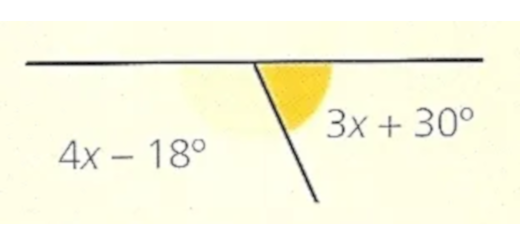O perímetro e a área de um triângulo
Trigonometria: Matematicamente Falando 9 - Parte 2 Pág. 61 Ex. 9
 No triângulo retângulo da figura, a hipotenusa mede mais 4 cm do que o cateto [AB] e \({\mathop{\rm sen}\nolimits} \widehat C = 0,6\).
No triângulo retângulo da figura, a hipotenusa mede mais 4 cm do que o cateto [AB] e \({\mathop{\rm sen}\nolimits} \widehat C = 0,6\).
Calcula o perímetro e a área do triângulo [ABC]
\[\begin{array}{*{20}{l}}{{\mathop{\rm sen}\nolimits} \widehat C = 0,6}& \Leftrightarrow &{\frac{{\overline {AB} }}{{\overline {BC} }} = 0,6}\\{}& \Leftrightarrow &{\overline {AB} = 0,6 \times \overline {BC} }\end{array}\]
Como \(\overline {BC} = \overline {AB} + 4\), vem:
\[\begin{array}{*{20}{l}}{\overline {AB} = 0,6 \times \left( {\overline {AB} + 4} \right)}& \Leftrightarrow &{0,4\overline {AB} = 2,4}\\{}& \Leftrightarrow &{\overline {AB} = 6}\end{array}\]
Aplicando o Teorema de Pitágoras no triângulo retângulo [ABC], vem:
\[\overline {AC} = \sqrt {{{\overline {BC} }^2} – {{\overline {AB} }^2}} = \sqrt {{{10}^2} – {6^2}} = 8\]
Logo, o perímetro, em centímetros, e a área, em centímetros quadrados, do triângulo [ABC] são, respetivamente:
\[{P_{\left[ {ABC} \right]}} = \overline {AB} + \overline {AC} + \overline {BC} = 6 + 8 + 10 = 24\]
\[{A_{\left[ {ABC} \right]}} = \frac{{\overline {AB} \times \overline {AC} }}{2} = \frac{{6 \times 8}}{2} = 24\]


















